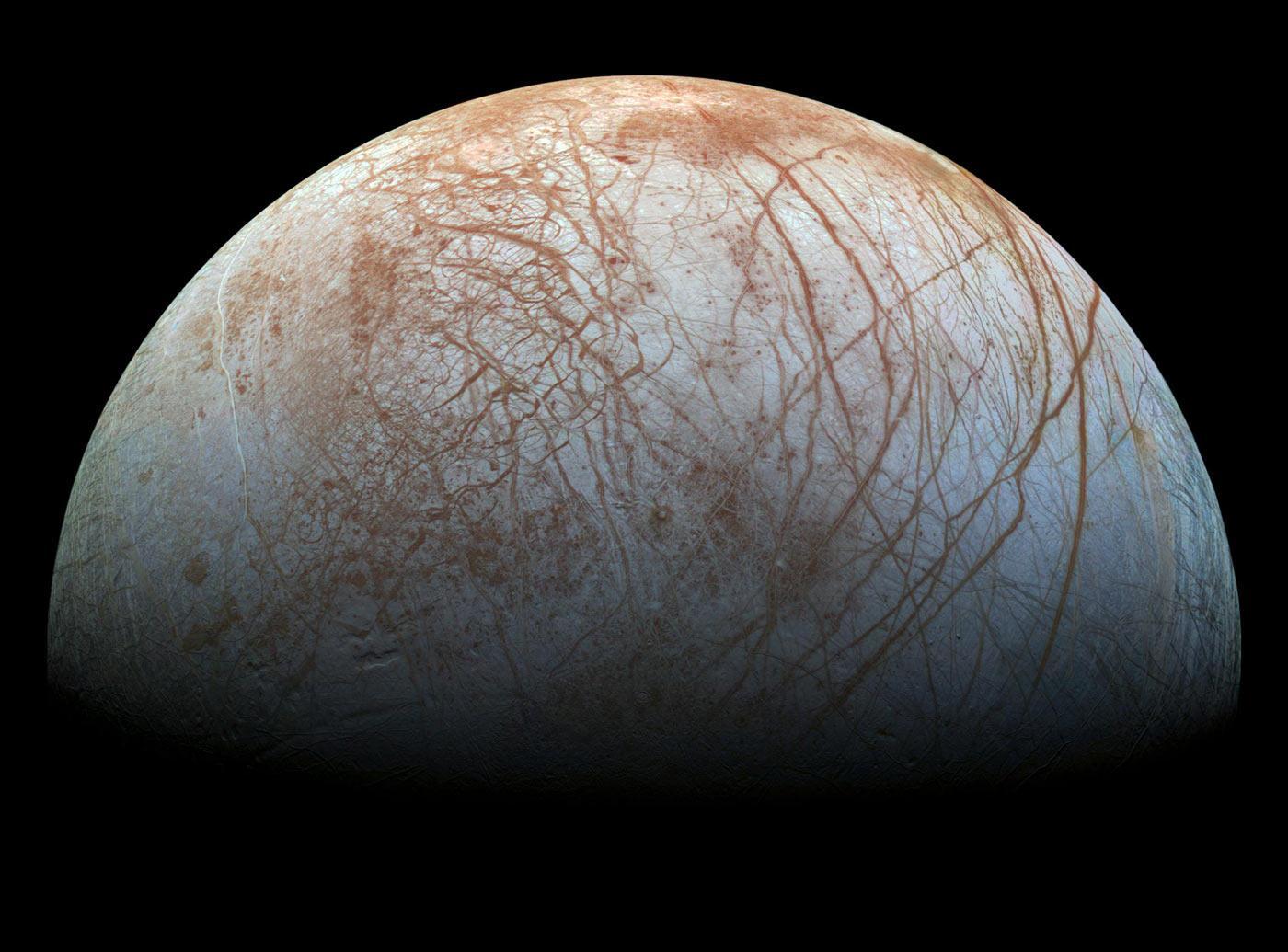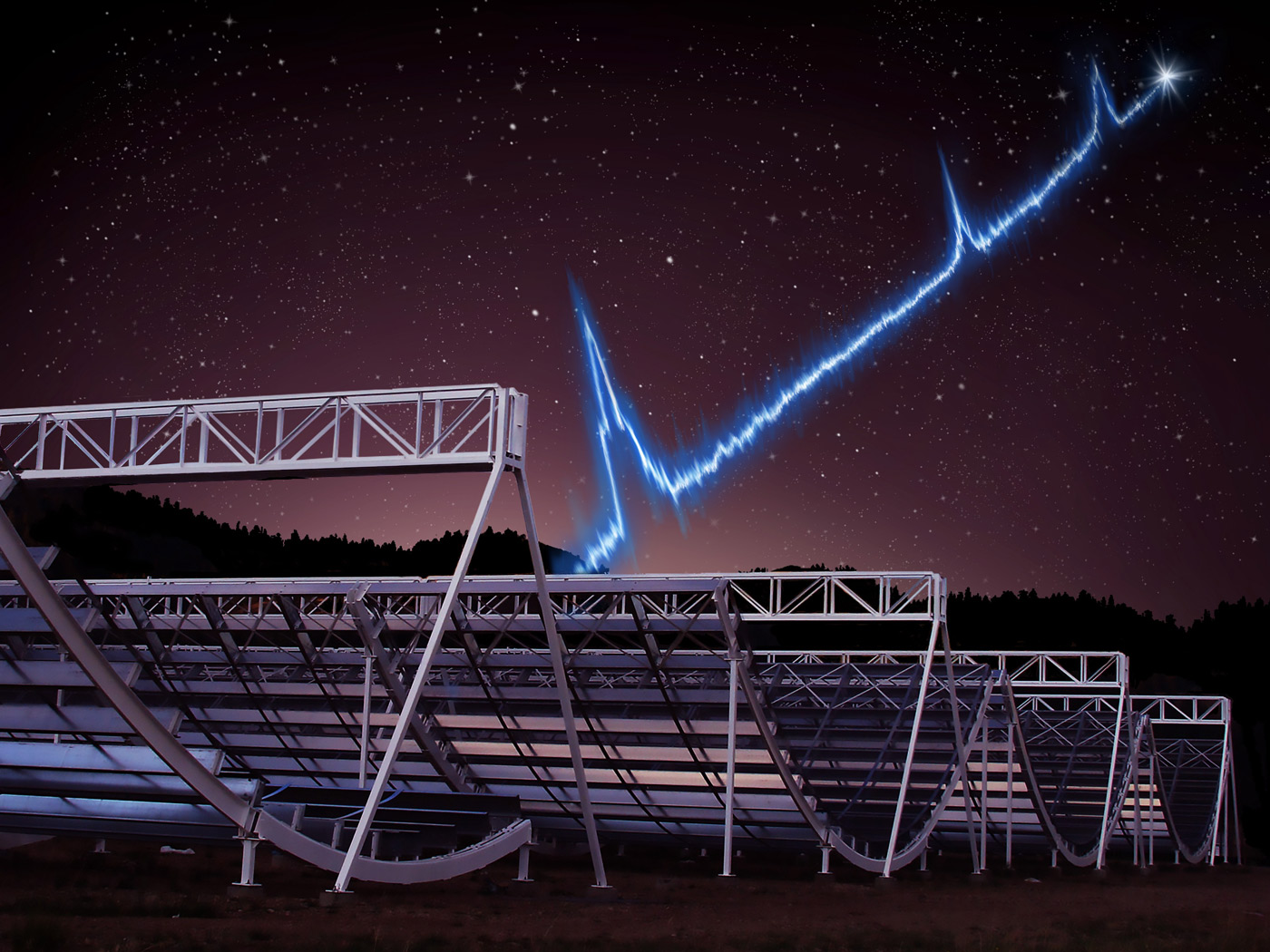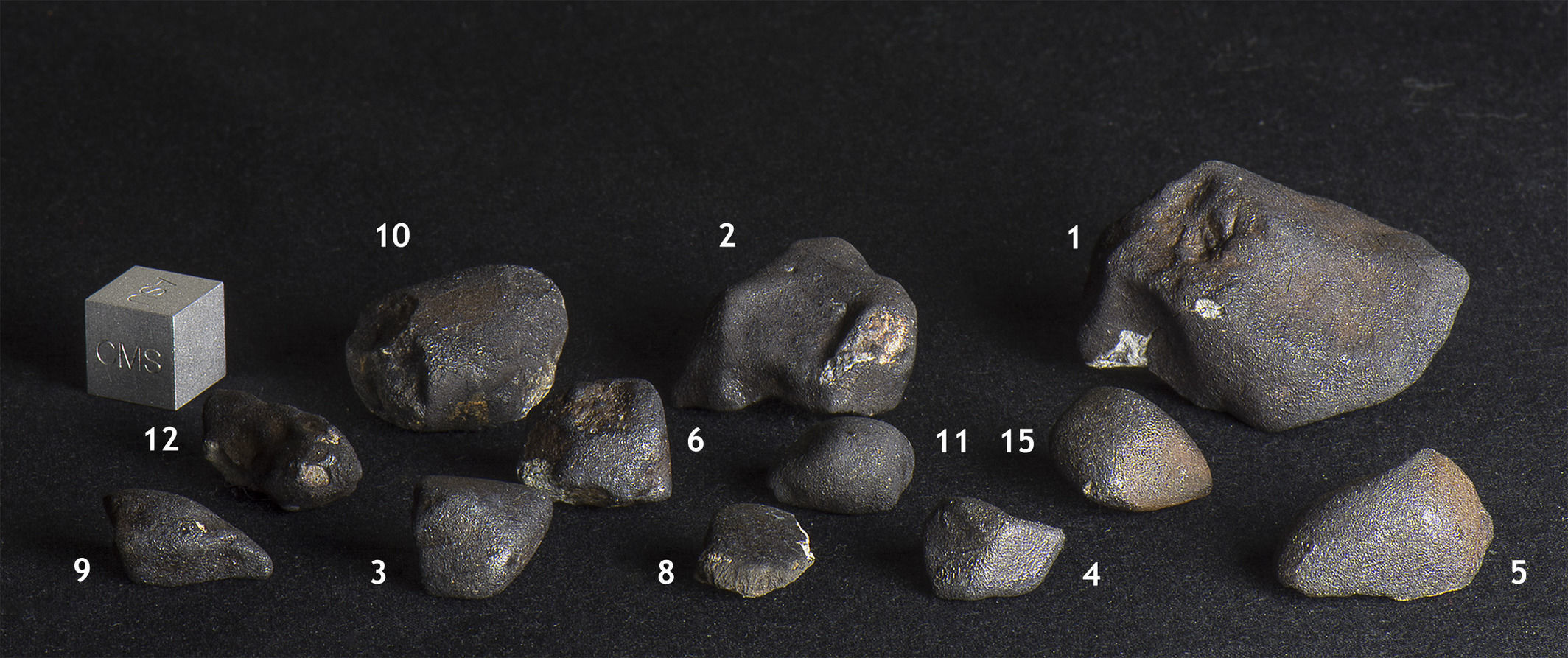
Newly reprocessed photos of Jupiter’s moon Europa have been released, showing more clearly the diverse and contrasting lunar surface that geologists aptly call “chaos terrain.” Mario Valenti of the SETI Institute led the effort to map color onto high-resolution grayscale images from lower-resolution color shots of the same area taken from a different flyby.
Using decades-old snapshots of Europa captured during NASA/JPL's Galileo mission to the immense gas giant in the late '90s, engineers at SETI led by Mario Valenti were able to reprocess a trio of fly-by images of the icy satellite to reveal incredible levels of depth and focus. (SyFy Wire)
- SETI.org: Old Galileo Images of Europa Reveal New Details
- SyFyWire: Decades-old Galileo images of Europa get a detailed digital makeover
- NASA JPL: Chaos Transition
- Forbes: Jupiter’s ‘Veiny Eyeball’ Moon Europa Is Spewing Water Into Space. Will It Taste of Life?
- AGU Blogosphere: New evidence of watery plumes on Jupiter’s moon Europa
 FRB Discovered in our Galaxy
FRB Discovered in our GalaxyResearchers recently detected the first fast radio burst (FRB) in our galaxy, the galactic soft gamma repeater, SGR 1935+2154. Astronomers are very excited about this new development, which may bring them closer to solving the mysteries surrounding these very bright radio signals that last only approximately a millisecond.
- Newsweek: Radio Signal Coming from Inside the Milky Way Detected by Astronomers
- Facebook Live: Galactic FRB SGR 1935+2154
- YouTube: What Are Fast Radio Bursts?
- SETI.org: SETI Talks: Fast Radio Bursts: A long-standing mystery about to end?
- SETI.org: Newest FRB Could Be a Rosetta Stone
- SETI.org: Fast radio bursts from space have baffled scientists for years. But an explanation may come soon.
 Meteors – View from Mars Hill: Detecting an intruder from outer space
Meteors – View from Mars Hill: Detecting an intruder from outer spaceThe security cameras that comprise the LO-CAMS camera system in Flagstaff, Arizona, captured the cosmic intrusion of the 2016 meteorite fall.
The Flagstaff camera system is run by Moskovitz and goes by the acronym LO-CAMS, for “Lowell Observatory Cameras for All-sky Meteor Surveillance.” It is based off a similar concept developed by Peter Jenniskens of the SETI Institute in Mountain View, California and consists of arrays of 16 off-the-shelf security cameras to gather what Moskovitz calls a “fly’s eye approach to recording the night sky.”
- Arizona Daily Sun: View from Mars Hill: Detecting an intruder from outer space
- SETI.org: 2016 Arizona Meteorite Fall Points Researchers to Source of LL Chondrites
 AAS Names 29 NASA-Affiliated Legacy Fellows
AAS Names 29 NASA-Affiliated Legacy FellowsThe American Astronomical Society (AAS), an organization of professional astronomers in North America, has named twenty-nine scientists working at or affiliated with NASA to be AAS Fellows. Steven Dick, who served on the SETI Institute Science Advisory Board, and Drake Award recipient William Borucki are among those honored for their extraordinary achievement and service. Additionally, included are three from the SETI Institute: Jill Tarter, SETI Institute co-founder and Trustee, Andrew Fraknoi, SETI Institute Trustee and Melissa McGrath, SETI Institute Astronomer.
The AAS Fellows program was established in 2019 to honor members for their contributions toward the AAS mission of enhancing and sharing humanity’s scientific understanding of the universe. Being named a Fellow honors members for extraordinary achievement and service. AAS Fellows will be recognized for original research and publication, innovative contributions to astronomical techniques or instrumentation, significant contributions to education and public outreach, and noteworthy service to astronomy and to the Society itself.
- neconnected.co.uk: AAS Names 29 NASA-Affiliated Legacy Fellows
- AAS: AAS Fellows Program
- SETI.org: American Astronomical Society Announces First Class of AAS Fellows, Including three from the SETI Institute
 Weekly Space Hangout with Pascal Lee
Weekly Space Hangout with Pascal LeeDr. Pascal Lee, a Planetary Scientist at the SETI Institute, is featured on You Tube’s Weekly Space Hangout with hosts Fraser Cain, Dr. Morgan Rehnberg, Beth Johnson and Veranika Klimovich. Dr. Lee’s research focuses on the history of water on Mars and on planning the future human exploration of Mars.
 Weekly Space Hangout with Seth Shostak
Weekly Space Hangout with Seth ShostakYou Tube’s Weekly Space Hangout welcomes SETI Institute’s Senior Astronomer Dr. Seth Shostak, who has a long history of research in radio astronomy and SETI, the Search for Extraterrestrial Intelligence.
In last week's episode, disease ecologist Dr. Jon Epstein talked about how he and his team fight a pandemic in bat caves. As he explained, finding the viruses, what kind of human activity triggers outbreaks and how science counters the unsubstantiated claim that the virus escaped from a lab in To the Bat Cave.
In our previous week's episode, guests Caleb Scharf, Laurie Barge, Bruce Damer and Jeremy England discussed how the conditions of the early Earth were different from today, how meteors seeded Earth with organics and a provocative idea that life arose as an inevitable consequence of matter shape-shifting to dissipate heat in Is Life Inevitable?.
Recent Facebook Live episodes include:
- Fireside Chat with CEO Bill Diamond
- Galactic FRB SGR 1935+2154
Researchers discussed the discovery of the first fast radio burst (FRB) detected in our galaxy, the galactic soft gamma repeater, SGR 1935+2154. Panelists from that discussion, Daniele Michilli and Wael Farah, share their insights about this discovery. Hosted by Franck Marchis. - Long Now Seminar: Laurance Doyle, “Interspecies Communication and the Search for Extraterrestrial Intelligence”
As always, videos of all past Facebook Live events can be found on our Facebook page: https://www.facebook.com/SETIInstitute/.





